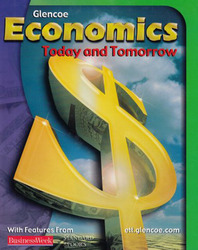1 A) net imports. B) net exports. C) business goods and services. D) consumer goods and services. 2 A) national income minus corporate income taxes, profits that businesses put back into their businesses, and Social Security contributions employers make; plus transfer payments. B) the total income earned by everyone in the economy. C) the total income individuals receive before personal taxes are paid. D) the income that people have left after taxes, including Social Security contributions. 3 A) a rise in the purchasing power of money. B) the decline in the purchasing power of money. C) an increase in the quantity of goods and services produced. D) a prolonged decline in the prices of goods and services. 4 A) inflation in all sectors of the economy. B) price changes in GDP. C) the change in price over time of a specific group of goods and services the average household uses. D) the change in price over time of a specific group of goods used by businesses. 5 A) One of the reasons for the inverse relationship is the relative price of goods and services sold to other countries—as prices move down, exports increase. As prices move up, exports decrease. B) As the quantity demanded of real domestic output goes down, the price level goes up. C) The quantities of real domestic output demanded and price level move in opposite directions. D) As the price level goes up, the demand for real domestic output goes up as well. 6 A) the price level decreases. B) producers supply fewer goods in the marketplace. C) all firms experience higher costs of production. D) all firms experience lower costs of production. 7 A) potential suppliers become actual suppliers. B) the aggregate quantity demanded and aggregate quantity supplied meet. C) the aggregate quantity supplied exceeds the aggregate quantity demanded. D) the aggregate quantity demanded exceeds the aggregate quantity supplied. 8 A) a trough. B) a recovery. C) an expansion. D) a depression. 9 A) the stock market crash of 1987 was followed by a mild recession in the early 1990s. B) in the 1930s, real GDP fell sharply, pushing the nation into the depths of depression. C) the 1980s started off with a small recession that developed into the most serious economic downturn since World War II. D) the 1940 stock market crash sent the United States into a serious recession. 10 A) business investments, external factors, internal factors, and psychological factors. B) business investments, government activity, external factors, and psychological factors. C) global activity, government activity, external factors, and psychological factors. D) business investments, government activity, stock market activity, and external factors. 11 A) lagging indicators. B) coincident indicators. C) leading indicators. D) GDPs for the past 10 years.





